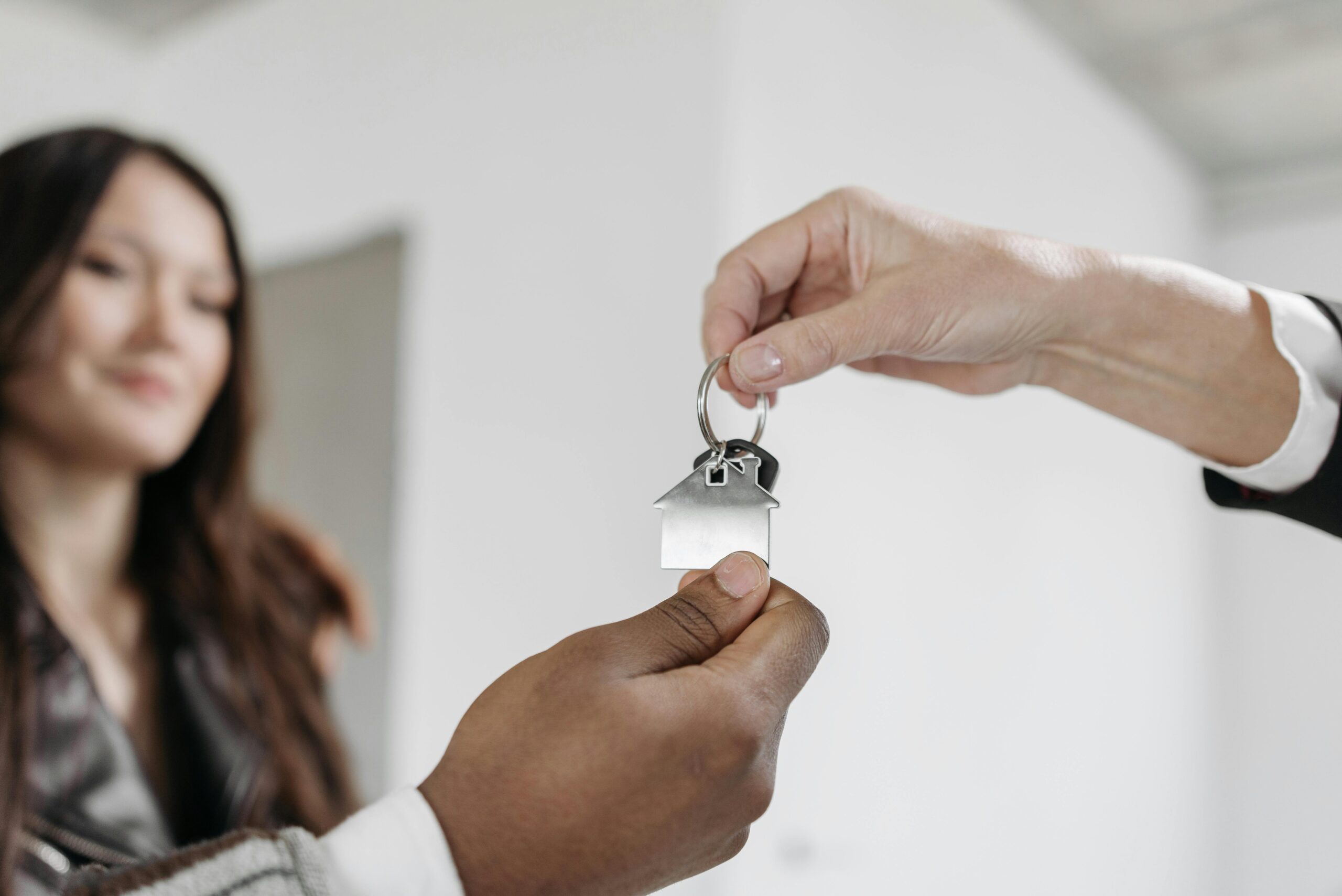Why Invest in a Laundromat?
When exploring small business opportunities, one option that consistently delivers solid returns is owning a laundromat. For many entrepreneurs, buying & financing a laundromat offers a smart path to building long-term, passive income with relatively low overhead. Here’s why it’s a worthwhile investment:
1. Recession-Resistant Industry
No matter what’s happening in the economy, people still need clean clothes. This makes laundromats a recession-proof business. Demand remains steady even during economic downturns, ensuring consistent cash flow.
2. Low Labor Requirements
Most laundromats operate as self-service businesses, which means you don’t need to hire a large staff. Some owners run them completely unattended with the help of security cameras and remote monitoring. This reduces labor costs and management headaches.
3. Reliable Cash Flow
Laundromats typically offer a steady, predictable income stream. Since the business model is based on coin or card-operated machines, you can easily track revenue. This consistent cash flow makes buying & financing a laundromat attractive to both new and seasoned investors.
4. Scalable Business Model
Once you’ve successfully purchased and operated one laundromat, it’s relatively easy to replicate the model. Many laundromat owners expand by opening multiple locations, turning a modest investment into a scalable business empire.
5. Favorable Financing Opportunities
The SBA and other lenders recognize laundromats as low-risk businesses, which can make it easier to secure funding. With solid revenue history and proper documentation, buying & financing a laundromat becomes a highly achievable goal, even for first-time buyers.
6. Flexible Ownership
Whether you want to be a hands-on owner or prefer a more passive role, laundromats offer flexibility. With the right systems in place (like remote monitoring and scheduled maintenance), you can choose how involved you want to be in day-to-day operations.
Key Factors to Consider Before Buying a Laundromat
Buying & financing a laundromat can be a profitable venture—but success depends heavily on choosing the right business. Before making any purchase, it’s crucial to evaluate several key factors that impact your long-term return on investment.
1. Location is Everything
The location of the laundromat plays a major role in its performance. Look for areas with high foot traffic, limited competition, and a dense population—especially neighborhoods with renters, students, or low-income families who are less likely to have in-home laundry.
2. Condition and Age of Equipment
Old, unreliable washers and dryers can lead to higher maintenance costs and unhappy customers. During due diligence, check the age, condition, and brand of the machines. If they’re outdated, factor in the cost of replacement or upgrades.
3. Lease Terms and Property Agreements
If you’re not buying the building, review the lease terms carefully. Is it long-term and renewable? Are rent increases reasonable? Unfavorable lease agreements can hurt your profit margins or jeopardize your investment in the future.
4. Utility Costs and Efficiency
Water, gas, and electricity are major operating expenses in a laundromat. Ask for utility bills from the past 12 months. Energy-efficient machines and proper maintenance can help lower ongoing costs.
5. Financial Performance and Documentation
Always request the last 2–3 years of financial records. This includes income, expenses, tax returns, and utility costs. Be cautious if the seller claims cash income that’s not documented—this can complicate buying & financing a laundromat through traditional lenders.
6. Local Competition and Demand
Conduct a competitive analysis. Are there many laundromats nearby? Are they busy or struggling? High local demand with limited competition is a sign of opportunity.
7. Customer Base and Reputation
Check online reviews and talk to current customers if possible. A loyal customer base and good reputation can give you a head start after purchasing the business.
Step-by-Step Guide to Buying a Laundromat
Step 1: Define Your Budget and Financing Options
Before you start searching, determine how much capital you can invest. Will you be using savings, seeking a business loan, or applying for SBA financing?
Step 2: Research the Market and Target Areas
Identify ideal neighborhoods or cities with strong laundromat demand. Focus on areas with high rental populations, limited competition, and consistent foot traffic..
Step 3: Find Laundromats for Sale
Use online marketplaces, commercial real estate agents, or local listings to identify laundromats for sale. Look for detailed listings with financial records, equipment info, and lease terms.
Step 4: Evaluate the Business
Once you find a potential laundromat, begin your due diligence:
-
Request 2–3 years of financial records
-
Inspect machines and equipment
-
Analyze utility bills
-
Review the lease agreement
This step is crucial in making sure the laundromat is truly profitable and not a money pit.
Step 5: Make an Offer and Negotiate
Based on your evaluation, submit a purchase offer. Be prepared to negotiate on the price, equipment, or contingencies. It’s wise to involve a business broker or attorney during this phase.
Step 6: Secure Financing
If you’re not paying in full, now is the time to finalize your loan. SBA loans are popular for buying & financing a laundromat due to their lower interest rates and extended repayment terms.
Step 7: Close the Deal
Once financing is approved and all paperwork is in place, close the deal. This typically involves:
-
Signing the purchase agreement
-
Transferring funds
-
Taking legal possession of the business
Step 8: Transition and Optimize
After purchase, spend time getting to know the customer base and reviewing operations. Update equipment if necessary, train staff (if any), and look for areas to increase efficiency and profitability.
Top Financing Options for Buying a Laundromat
One of the biggest challenges in buying & financing a laundromat is securing the right funding. Fortunately, there are several financing options available that can help you turn your laundromat ownership dreams into reality. Understanding each option’s pros and cons will empower you to make the best financial decision.
1. Small Business Administration (SBA) Loans
SBA loans are among the most popular and accessible options for financing a laundromat purchase. These government-backed loans typically offer lower interest rates, longer repayment terms (up to 25 years), and require a smaller down payment compared to traditional loans.
Because laundromats are considered stable, recession-resistant businesses, lenders are often more willing to approve SBA loans for them.
2. Conventional Bank Loans
Traditional bank loans are another option if you have a strong credit score and a solid business plan. While the interest rates might be higher and repayment terms shorter than SBA loans, banks can provide quick access to capital.
Be prepared to provide comprehensive financial documents and possibly collateral.
3. Seller Financing
In some cases, the current laundromat owner may offer financing. This arrangement allows you to make a down payment and pay the remaining balance over time directly to the seller, often with flexible terms.
Seller financing can simplify the buying process but requires clear legal agreements to protect both parties.
4. Equipment Financing
If the laundromat’s equipment needs upgrading, consider equipment financing or leasing. This type of loan is specifically designed to cover the cost of washers, dryers, and other essential machines.
It can free up cash flow and spread out the expense over time.
5. Personal Savings or Investments
Using your own savings or liquidating other investments is a straightforward way to finance the purchase without taking on debt. However, this approach carries personal financial risk and requires careful consideration.
6. Business Line of Credit
A business line of credit gives you access to funds as needed, up to a credit limit. This flexible financing method is useful for covering working capital or unexpected expenses during the transition period after buying & financing a laundromat.
Common Mistakes to Avoid When Buying a Laundromat
Buying & financing a laundromat can be a lucrative investment, but like any business purchase, it comes with potential pitfalls. Avoiding common mistakes will save you time, money, and stress down the road. Here are some of the most frequent errors prospective laundromat buyers make—and how you can steer clear of them.
1. Skipping Thorough Due Diligence
One of the biggest mistakes is rushing the due diligence process. Failing to carefully review financial records, utility bills, lease agreements, and equipment condition can lead to unpleasant surprises after purchase.
Always verify income statements and cross-check utility costs to confirm the business’s profitability.
2. Overestimating Revenue Potential
New buyers often fall into the trap of assuming current earnings will automatically grow. Don’t rely solely on seller projections or verbal assurances.
Consider factors like local competition, demographic changes, and equipment efficiency that could impact future revenue.
3. Neglecting Location Analysis
Even a well-run laundromat can struggle if it’s in a poor location. Analyze the neighborhood’s population density, access to public transportation, parking availability, and nearby competition before committing.
4. Underestimating Maintenance and Operating Costs
Old or poorly maintained machines can rack up repair costs and cause downtime. Be sure to factor in ongoing maintenance, utility bills, and staffing costs when budgeting.
Ignoring these expenses can severely affect your profit margins.
5. Choosing the Wrong Financing Option
Not all financing solutions are created equal. Selecting a loan with unfavorable terms or taking on too much debt can strain your cash flow.
Consult with financial advisors to select the best option tailored to your situation when buying & financing a laundromat.
6. Failing to Plan for Business Transition
Transitioning ownership smoothly is critical. Failing to notify customers, properly train new staff, or update marketing efforts can disrupt revenue.
Prepare a clear plan for the handover period to maintain stability.
Avoiding these common mistakes will put you on the path to successful laundromat ownership. Being informed and cautious during the buying & financing a laundromat process ensures your investment pays off for years to come.
How to Maximize Profit After Purchasing a Laundromat
Successfully buying & financing a laundromat is just the first step. To ensure your investment delivers strong returns, it’s essential to focus on strategies that maximize profit and boost long-term business health. Here are practical ways to increase your laundromat’s profitability after purchase.
1. Upgrade to Energy-Efficient Equipment
Older washers and dryers consume more water and electricity, increasing your utility costs. Investing in energy-efficient machines can reduce expenses significantly and attract eco-conscious customers.
2. Implement Smart Pricing Strategies
Analyze local competitors and customer usage patterns to set competitive yet profitable prices. Offering tiered pricing for different machine sizes or wash cycles can encourage more usage and increase revenue.
3. Maintain Excellent Customer Service
Friendly staff, a clean environment, and quick response to customer concerns build loyalty. Satisfied customers tend to visit more frequently and recommend your laundromat to others.
4. Expand Services and Amenities
Consider adding value-added services such as wash-and-fold, dry cleaning drop-off, vending machines, or free Wi-Fi. These extras can generate additional income streams and improve customer satisfaction.
5. Regular Maintenance to Avoid Downtime
Schedule routine equipment checks and timely repairs to prevent costly breakdowns. Operational machines mean higher customer satisfaction and steady cash flow.
6. Use Technology for Efficiency
Modern payment systems like mobile apps, card readers, or contactless payments streamline transactions and reduce cash handling risks. Additionally, remote monitoring systems can alert you to machine issues instantly.
7. Market Your Laundromat Locally
Use local advertising, social media, and community events to raise awareness. Promoting special offers or loyalty programs can attract new customers and encourage repeat visits.
Is Buying a Laundromat Right for You?
If you’re considering buying & financing a laundromat, it’s important to evaluate whether this business aligns with your goals, skills, and lifestyle. Laundromats offer unique advantages, but they also require commitment and strategic management. Here are key factors to consider to decide if owning a laundromat is the right choice for you.
1. Do You Want a Stable, Cash-Flow Business?
Laundromats are known for steady cash flow because they provide an essential service. People always need clean clothes, making laundromats relatively recession-resistant. If you’re looking for a business with predictable daily income, this could be a good fit.
2. Are You Comfortable Managing a Physical Location?
Owning a laundromat means overseeing a brick-and-mortar operation. You’ll need to manage maintenance, staff (if any), customer service, and inventory. If you prefer remote or fully passive investments, a laundromat might require more hands-on involvement than you want.
3. Are You Prepared for Operational Responsibilities?
While laundromats don’t usually demand long hours, you must be ready to handle equipment upkeep, cleaning, and occasional troubleshooting. Some owners hire managers, but many take a direct role in daily operations.
4. Do You Have Access to Financing?
Since buying & financing a laundromat often involves a significant upfront investment, having access to loans, savings, or investors is crucial. Understanding your financing options and comfort with debt is essential before committing..
5. Are You Willing to Invest in Marketing and Growth?
To maximize profits, owners often need to market their laundromat, introduce new services, or upgrade equipment. If you are willing to invest time and resources into growing the business, the laundromat can be a rewarding venture.
Ultimately, buying & financing a laundromat can be a great opportunity for entrepreneurs seeking steady income and community service involvement. However, it’s vital to assess your personal goals, management style, and financial situation carefully before making a decision.
Expert Tips for First-Time Laundromat Buyers
Embarking on buying & financing a laundromat for the first time can be both exciting and overwhelming. To help you navigate the process smoothly and set your business up for success, here are expert tips specifically tailored for first-time laundromat buyers.
1. Conduct Thorough Market Research
Before finalizing any purchase, deeply understand the local market. Evaluate the competition, neighborhood demographics, and customer demand. A laundromat in a high-traffic, underserved area is more likely to thrive.
2. Review Financial Records Carefully
Ask for at least three years of financial statements, including income, expenses, and utility bills. Analyze trends and verify the accuracy to avoid surprises. If needed, hire an accountant experienced in laundromat businesses.
3. Inspect Equipment and Facility Condition
Since equipment is a major investment, ensure washers, dryers, and other machinery are in good working order. Check the facility’s cleanliness, plumbing, and electrical systems to avoid costly repairs after purchase.
4. Understand All Costs Involved
Beyond the purchase price, budget for ongoing expenses like utilities, maintenance, insurance, taxes, and potential staffing. Accurate cost forecasting helps with realistic profit expectations.
5. Explore Multiple Financing Options
Don’t settle on the first financing option. Explore SBA loans, traditional bank loans, seller financing, and personal loans to find terms that suit your financial situation and business plan.
6. Build a Transition Plan
Work with the seller to develop a clear handover strategy. This might include overlapping time to learn the business, notifying customers, and setting up vendor contracts to ensure a smooth ownership change.
7. Network with Other Laundromat Owners
Joining local business groups or laundromat associations can provide valuable insights and support. Experienced owners often share tips on improving operations and avoiding common pitfalls.
Understanding the Costs of Laundromat Ownership
When buying & financing a laundromat, understanding the full range of costs involved is crucial for budgeting and ensuring profitability. Laundromats have unique expenses that impact your bottom line beyond just the purchase price. Here’s a breakdown of the key costs every laundromat owner should anticipate.
1. Purchase Price and Financing Costs
The initial investment includes the cost of buying the laundromat property or business. If you’re financing the purchase, factor in interest payments, loan fees, and repayment terms. These financing costs will affect your monthly cash flow and overall return on investment.
2. Equipment Expenses
Washers, dryers, and ancillary machines are the backbone of your laundromat. Costs can include:
- Purchasing new or used equipment
- Repairs and maintenance
- Replacement parts
Energy-efficient machines may have a higher upfront cost but can save money on utilities over time.
3. Utility Bills
Laundromats consume large amounts of water, gas, and electricity. Utility bills often represent one of the largest ongoing expenses. Monitoring usage and investing in energy-saving equipment can help control these costs.
4. Rent or Mortgage
If you don’t own the property outright, monthly rent or mortgage payments must be factored in. Location and lease terms can significantly impact your costs.
5. Labor and Staffing
Some laundromats require staff for customer service, cleaning, and maintenance. Payroll, benefits, and training expenses should be included in your budget if you plan to hire employees.
6. Insurance and Taxes
Business insurance protects your investment against risks such as property damage or liability claims. Additionally, property taxes and business licenses add to your operating costs.
7. Supplies and Miscellaneous Expenses
You’ll need ongoing supplies such as detergents (if offering wash-and-fold), vending machine inventory, cleaning materials, and marketing costs to attract and retain customers.
Having a comprehensive understanding of these costs is essential when buying & financing a laundromat. Proper budgeting and cost management will ensure your laundromat remains profitable and sustainable over time.
Certainly! Here’s a high-quality, clear, and concise conclusion for the topic Buying & Financing a Laundromat, using the focus keyword naturally. Image placement suggestions included.
Conclusion: Buying & Financing a Laundromat
Buying & financing a laundromat can be a smart and profitable investment when approached with careful planning and informed decision-making. This business offers the advantage of steady demand and the potential for consistent cash flow, making it appealing for both new and seasoned entrepreneurs.
However, success depends heavily on understanding the full scope of costs, choosing the right financing options, and implementing effective management strategies after purchase. Whether you’re assessing market conditions, reviewing equipment, or exploring loan possibilities, thorough research and expert advice will help you make the best choices.
By taking the time to evaluate all factors involved in buying & financing a laundromat, you can minimize risks and position your business for long-term growth and profitability.
FAQ: Buying & Financing a Laundromat
1. What is the typical cost of buying a laundromat?
The cost varies widely depending on location, size, equipment condition, and lease terms. On average, laundromats range from $200,000 to $500,000, but smaller or less-equipped locations can be less expensive.
2. What financing options are available for purchasing a laundromat?
Common financing methods include Small Business Administration (SBA) loans, traditional bank loans, seller financing, and personal loans. Each option has different requirements and terms, so it’s important to research and choose the best fit for your financial situation.
3. How much can I expect to make owning a laundromat?
Profitability depends on factors such as location, operating costs, and management efficiency. Many laundromats generate steady monthly income, with net profits often ranging from 20% to 35% of gross revenue.
4. Do I need experience to run a laundromat?
While experience is helpful, many first-time buyers succeed by educating themselves, hiring knowledgeable staff, and using professional services like accountants and maintenance providers.
5. What ongoing costs should I anticipate after purchasing a laundromat?
Key expenses include utilities (water, gas, electricity), equipment maintenance, rent or mortgage payments, insurance, taxes, and staffing if applicable.
6. How long does it take to recoup the investment?
This depends on the purchase price, financing terms, and profitability. On average, owners may break even within 3 to 5 years, but careful management can shorten this timeline.
7. Are laundromats recession-proof?
Laundromats tend to be resilient during economic downturns because people still need laundry services, making them a relatively stable investment.
Understanding these FAQs can give you confidence when buying & financing a laundromat. If you have more questions, consulting with industry experts or business advisors is always a smart step.








jia9k4